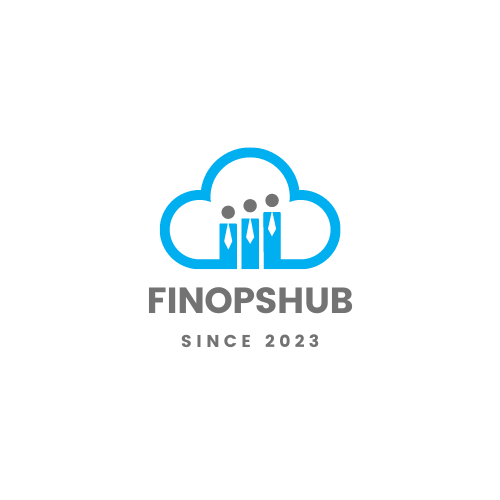Effectively managing costs across multiple cloud providers is essential for organizations looking to optimize their cloud investments. This article addresses the key challenges and strategies involved in multi-cloud cost management. First, lets understand the challenges.
Challenges of Managing Multiple Clouds
When handling cloud expenses across various providers, several challenges emerge:
- Cloud Sprawl: Cloud sprawl occurs as organizations rapidly adopt multiple cloud services, leading to resource duplication, untracked expenditures, and inefficiencies (Orange Matter).
- Lack of Unified Visibility: It can be difficult to obtain a comprehensive view of costs across different platforms like AWS, Azure, and Google Cloud, complicating efforts to monitor and control expenditures (Kion).
- Complex Pricing Models: Each cloud provider has unique pricing models, making it challenging to compare costs and allocate budgets efficiently.
- Governance Issues: Ensuring compliance and governance processes across multiple clouds can add a layer of complexity and increase the risk of overspending.
Strategies for Multi-Cloud Cost Optimization
To manage costs across multiple cloud providers effectively, consider adopting the following strategies:
- Cost Comparison and Resource Allocation: Regularly compare costs between providers for specific services and select the most cost-effective option for each workload. This practice can be significantly enhanced by adopting third-party cost management tools, which aggregate and analyze spending across various providers (Flexera).
- Automate Resource Scaling: Implement automation to scale resources up and down based on demand. This approach helps prevent unnecessary expenditures and ensures resources are utilized efficiently (Oracle).
- Cloud Cost Governance: Establish a governance framework by assigning dedicated team members, such as cloud architects and financial analysts, to oversee cloud costs. Form a cloud governance board to develop and implement cost management practices, including maintenance, bulk shutdowns of unused resources, and other cost-cutting procedures (Oracle).
- Utilize Cloud Providers’ Cost Management Tools: Leverage the comprehensive cost management tools offered by cloud providers. These tools provide insights into resource utilization, cost breakdowns, and recommendations for optimization, helping you make informed decisions to reduce costs.
- Hybrid Cloud Optimization: In hybrid environments, find the right balance between on-premises resources and cloud-based resources to maximize cost efficiency. This approach involves adjusting resource distributions to ensure an optimal cost-performance ratio (Flexera).
| Strategy | Description |
|---|---|
| Cost Comparison | Regularly comparing costs between providers to find the most cost-effective options. |
| Resource Scaling Automation | Using automation to scale resources up/down based on demand to avoid unnecessary expenditures. |
| Cloud Cost Governance | Assigning a governance team to develop and manage cost optimization practices. |
| Provider Cost Management Tools | Leveraging built-in cost management tools from cloud providers for insights and optimization tips. |
| Hybrid Cloud Optimization | Balancing on-premises and cloud-based resources for optimal cost efficiency. |
Implementing these strategies may help you manage costs effectively across multiple cloud providers, optimizing your expenditure and enhancing financial alignment with operational goals.
Implementing FinOps Practices
The area of establishing cloud cost governance and leveraging third-party monitoring tools is also necessary. Adopting Financial Operations (FinOps) practices is essential for organizations aiming to manage costs across multiple cloud providers.
These practices help you optimize cloud spending, ensure the highest value from your cloud investments, and maintain financial control without overspending.
How to Establish Cloud Cost Governance
Setting up cloud cost governance is the foundation of effective multi-cloud cost management. This setup allows a company to maintain security, compliance, and operational efficiency, while reducing the complexity of managing multiple clouds (JUTEQ).
- Define Policies and Procedures: Draft clear policies and procedures that outline cloud usage, cost allocation, and spending limits.
- Implement Tagging Standards: Utilize multi-cloud tagging best practices to categorize resources accurately. This aids in monitoring, reporting, and managing expenses effectively.
| Governance Component | Description |
|---|---|
| Policies and Procedures | Guidelines for cloud usage, cost allocation, and spending limits |
| Tagging Standards | Categorization of resources for better monitoring and reporting |
| Compliance Monitoring | Continuous review to ensure adherence to established policies and procedures |
| Cost Allocation Models | Methods such as chargeback and show-back models to track costs |
To understand how to implement FinOps principles in detail, you can refer to our comprehensive guide on FinOps principles.
Leveraging Third-Party Monitoring Tools
Employing third-party monitoring tools is critical for gaining visibility and control over multi-cloud environments. These tools provide advanced analytics and reporting, helping you identify and resolve issues efficiently.
- Advanced Analytics: Tools like CloudHealth and Cloudability offer insights into your cloud performance and spending patterns.
- Automated Reports: Regularly scheduled reports can help track spending, highlight anomalies, and forecast future expenses.
| Tool | Features | Benefits |
|---|---|---|
| CloudHealth | Advanced analytics, cost management, and governance | Improves visibility and financial control |
| Cloudability | Cost optimization, financial management, and resource management | Enhances resource allocation and cost efficiency |
| AWS Cost Explorer | Spend tracking, cost allocation, and forecasting | Simplifies AWS cost management and budget planning |
FinOps practices and leveraging third-party monitoring tools, can assist manage costs across multiple cloud providers efficiently and ensure your cloud investments align with business objectives.
If you are interested in exploring more on cloud financial management strategies, we recommend checking our articles on cloud budgeting and forecasting and eliminating cloud waste.





